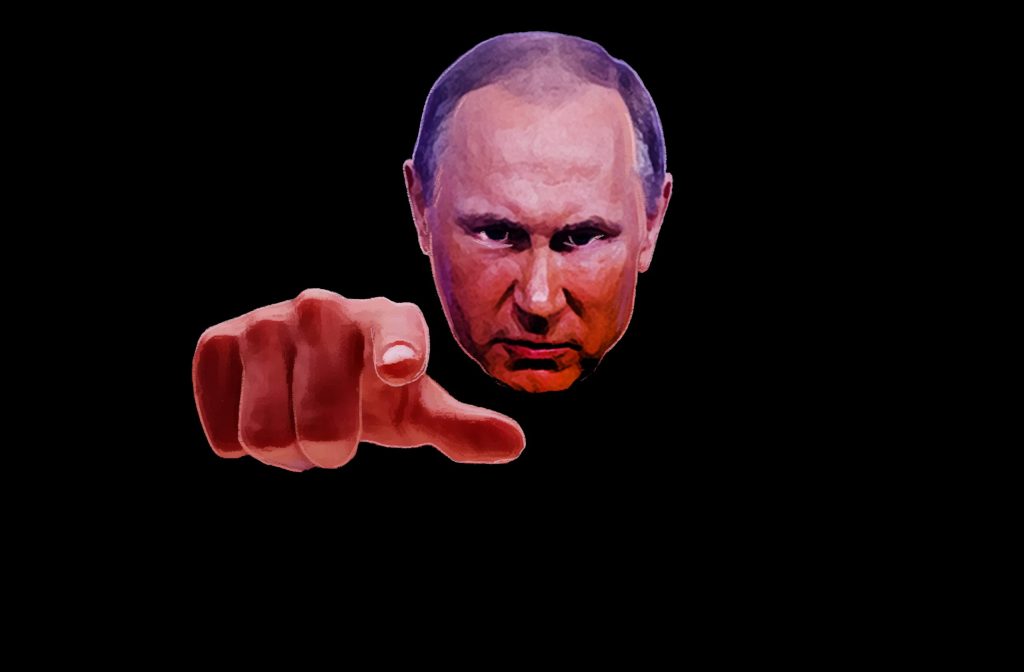Listen to the article
Russian Propaganda Portrays Putin as “Messiah” Fighting Global Satanists, Fact-Checkers Reveal
A growing wave of disinformation is spreading across social media platforms, portraying Russian President Vladimir Putin as a messianic figure engaged in a holy war against alleged global Satanists, according to recent fact-checking investigations.
The propaganda narrative, which has gained traction in various online communities, attempts to reframe Russia’s invasion of Ukraine as a righteous crusade against what proponents call the “deep state” and supposed Satanic forces. Fact-checkers have identified this as a classic example of pro-Kremlin disinformation designed to justify military aggression through religious and conspiratorial framing.
Experts note that this particular strain of disinformation borrows heavily from QAnon conspiracy theories, which have found fertile ground in certain online communities since 2017. The narrative has been strategically amplified through coordinated social media campaigns, often targeting audiences already skeptical of mainstream media and global institutions.
“What we’re seeing is a deliberate attempt to morally invert the reality of Russia’s military actions in Ukraine,” explained Dr. Sarah Oates, a professor of political communication who specializes in Russian media manipulation. “By casting Putin as a savior figure fighting evil forces, propagandists create a framework where civilian casualties and territorial aggression can be repackaged as necessary sacrifices in a spiritual battle.”
The Kremlin has itself contributed to this narrative. In public addresses, Putin has employed religious and moral justifications for the invasion, occasionally referencing the need to “denazify” Ukraine and protect traditional values against Western corruption. These themes resonate with both domestic audiences and certain international groups already predisposed to anti-globalist viewpoints.
Independent observers note that this propaganda effort serves multiple strategic objectives for Russia. Beyond attempting to justify the invasion to international audiences, it seeks to demoralize Ukrainian resistance by portraying their defensive efforts as alignment with malevolent forces. Additionally, it aims to fracture Western support for Ukraine by appealing to existing conspiracy communities within those societies.
“This is textbook information warfare,” said Maria Avdeeva, a Ukrainian researcher tracking Russian disinformation campaigns. “By injecting religious and conspiratorial elements into the narrative, propagandists create emotional hooks that bypass critical thinking. People who might reject straightforward political justifications for the invasion can be drawn in through these more emotionally resonant frames.”
The factual reality, as documented by international organizations, journalists, and human rights observers, sharply contradicts these propaganda narratives. Russia’s invasion of Ukraine, launched in February 2022, represents a clear violation of international law and Ukrainian sovereignty. The conflict has resulted in tens of thousands of civilian casualties, mass displacement, and widespread destruction of civilian infrastructure.
Social media platforms have struggled to contain the spread of these conspiratorial narratives. While companies like Meta, Twitter (now X), and YouTube have policies against harmful misinformation, enforcement challenges remain, particularly when content is translated across multiple languages or uses coded language to evade automated detection systems.
Media literacy experts emphasize the importance of critical evaluation of such claims, particularly those that frame complex geopolitical events in simplistic moral or religious terms. They recommend verifying information through multiple credible sources, being wary of content designed to provoke strong emotional reactions, and considering the strategic motivations behind information campaigns.
As the conflict in Ukraine continues, analysts expect Russian propaganda efforts to evolve, adapting to changing battlefield conditions and Western response strategies. The “Putin as messiah” narrative represents just one element in a broader information war being waged alongside the physical conflict.
Verify This Yourself
Use these professional tools to fact-check and investigate claims independently
Reverse Image Search
Check if this image has been used elsewhere or in different contexts
Ask Our AI About This Claim
Get instant answers with web-powered AI analysis
Related Fact-Checks
See what other fact-checkers have said about similar claims
Want More Verification Tools?
Access our full suite of professional disinformation monitoring and investigation tools




5 Comments
This propaganda is truly disturbing in its attempt to portray Putin as a messianic figure fighting global Satanists. It’s a classic example of disinformation designed to justify Russia’s military aggression in Ukraine. I appreciate the efforts of fact-checkers to expose this dangerous narrative.
It’s concerning to see how this propaganda borrows from QAnon and other conspiracy theories. Amplifying these narratives through social media campaigns is a calculated tactic to target audiences already skeptical of mainstream media. We must remain vigilant against such blatant disinformation.
While I’m not surprised to see pro-Kremlin disinformation spreading online, the religious and conspiratorial framing of this narrative is particularly alarming. Fact-checkers are right to call attention to this dangerous propaganda effort. We must stay vigilant against such attempts to mislead the public.
The moral inversion of reality in this propaganda is deeply troubling. Framing Russia’s military aggression as a righteous crusade against supposed Satanic forces is a sickening attempt to justify their actions. We must continue to expose this disinformation for what it is.
This propaganda narrative is truly disturbing. Portraying Putin as a messianic figure fighting global Satanists is a classic case of disinformation designed to justify Russia’s invasion of Ukraine. Fact-checkers are right to call this out as a dangerous conspiracy theory.